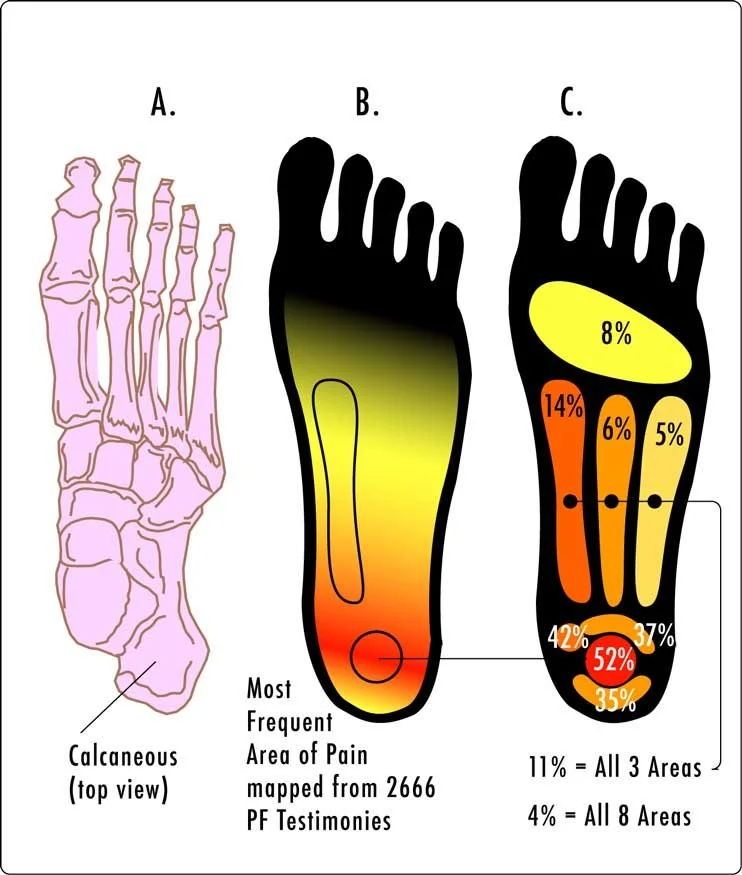Fixing Plantar Fasciitis: A Revolutionary Approach for Runners
Hey there, fellow runner!
Welcome to my blog, where I've got some exciting stuff to share about fixing plantar fasciitis for good!
I'm a specialist running Physiotherapist and a former UK SAS trainer, so you know you're in good hands.
Imagine this – you're all pumped for marathon season, but suddenly, that pesky foot pain hits you like a ton of bricks. Ugh, it's a real buzzkill!
You tried resting, but every time you hit a couple of miles during your run, the pain comes back with a vengeance.
Talk about frustrating!
After some Googling, you've self-diagnosed it as Plantar Fasciitis – that pain in the arch of the foot/ band of tissue from your heel bone to your big toe.
But those online exercises and stretches only bring temporary relief, and the issue keeps coming back whenever you hit the pavement.
You might also have tried a night splint, a steroid injection or applied regular stretches for plantar fasciitis but nothing seems to change long term.
You even switched to more supportive shoes, and while it helped a bit, the real problem remains a mystery, and it's bugging you, especially with your running goals in mind.
But do not fear, you do not need surgery and 9/10 you don’t need shockwave therapy, you just need to know how to reduce the inflammation of the plantar fascia.
Keep reading to find out how.
Understanding Plantar Fasciitis: Symptoms and Causes
So, what's the deal?
Well, it turns out the main cause of plantar fasciitis is all about how you're loading your feet.
You've been pushing the distance and speed too hard without giving those muscles enough time to catch up. It's like they're playing catch-up with a freight train carrying 2-3 times your body weight!
Too far
Too soon
Too quickly
Changing gradient
This explanation covers about 90% of PF cases.
In rare cases. It could be a heel spur (better check with an X-ray), or maybe your big toe isn't as flexible as it should be (compare it to the other side).
Most of the clients I see in my Liverpool City Centre running clinic (Feel free to come and visit if you're in the area BOOK HERE) have been to their GP, given stretching exercises, told to take pain killers and if you are lucky be referred to an NHS physio.
However, sadly most medical professionals are outdated on how to prevent plantar fasciitis. So what should you do if you think you have it and what’s the gold standard treatment for plantar fasciitis?
The Revolutionary Approach: High-Load Strength Training
Now, let's get down to business – how can you say goodbye to this plantar fasciitis once and for all?
Buckle up because I've got some revolutionary news for you!
A number of new treatment options are now available and are working extremely well.
A new groundbreaking approach that treats plantar fasciitis like tendinopathy! And I've got the deets from a study involving 48 patients who got split into two groups.
The Magic of High-Load Strength Training
One group did high-load strength training, and guess what? They saw a massive 29-point improvement on the Foot Function Index after just three months!
That's like waving goodbye to pain and saying hello to sweet relief.
So here's the secret sauce – high-load strength training stimulates collagen magic, normalises tendon structure, and makes your plantar fascia a super load-tolerant champ!
Follow the Plan for Lasting Results
But wait, there's more! It also improves your ankle's range of motion and pumps up your foot and ankle strength. Pretty cool, right?
So, here's the deal – follow the plan to a T.
Start with 12RM for three sets, and gradually work your way down to 8RM for five sets. Trust me, taking it easy will prevent any annoying symptom flares.
FYI! it's not some magical quick fix, but it's a promising path towards a pain-free future with some seriously effective plantar fasciitis treatment.
So go ahead, start strength training now, and say hello to happy feet and bye-bye to pesky pain!
Your running goals are within reach! Let's get you back on track, stronger and faster than ever before! 🏃♂️💨
*The key is to do them slowly or you can make your symptoms worse (the slower the better).
Also, make sure that your big toe is raised because that’s how you apply load through your plantar fascia.
It might feel sore for a few weeks after introducing these. keep the reps low and build up according to your symptoms.
Do the 2 exercises above 👆
1) 3 x 12 reps and then gradually work your way to 8 x 5 sets.
Another thing to mention is that if you get some relief from the stretches then you can add these in during the day too but it's not necessary as these exercises will stretch your plantar fascia as well as strength it.
When working with runners and athletes in my clinic, I usually get them to progress through these for 6-8 weeks whilst providing them with hands-on treatment to manage their symptoms.
If you are suffering from PF and you are in the North West, come and see me at my Liverpool City Centre running clinic.
More information on the website (book here) or you can book a virtual assessment (book here).
Thanks for reading!
Stuart Goldfinch (Specialist Physio, Ex UK SAS Trainer)
References
Rathleff MS, Mølgaard CM, Fredberg U, et al. High-load strength training improves outcome in patients with plantar fasciitis: A randomized controlled trial with 12-month follow-up. Scand J Med Sci Spor 2014:n/a-n/a doi: 10.1111/sms.12313[published Online First: Epub Date]|.





